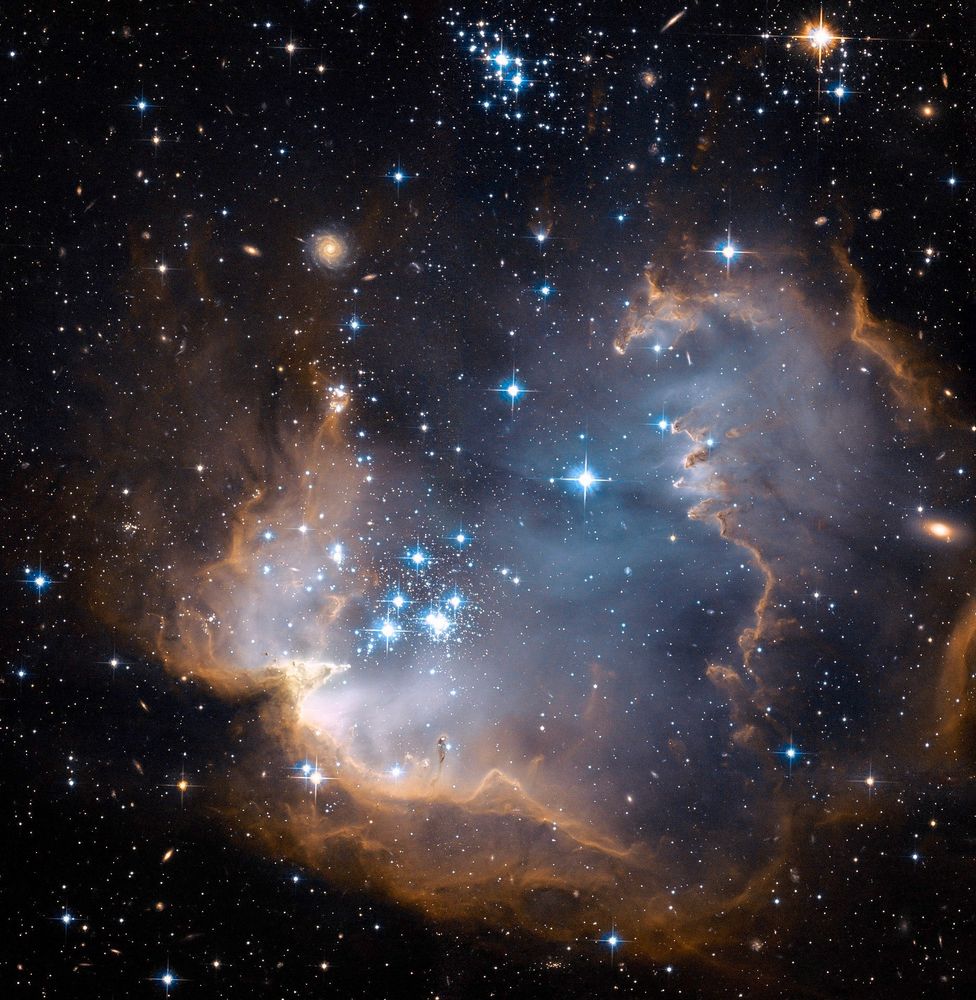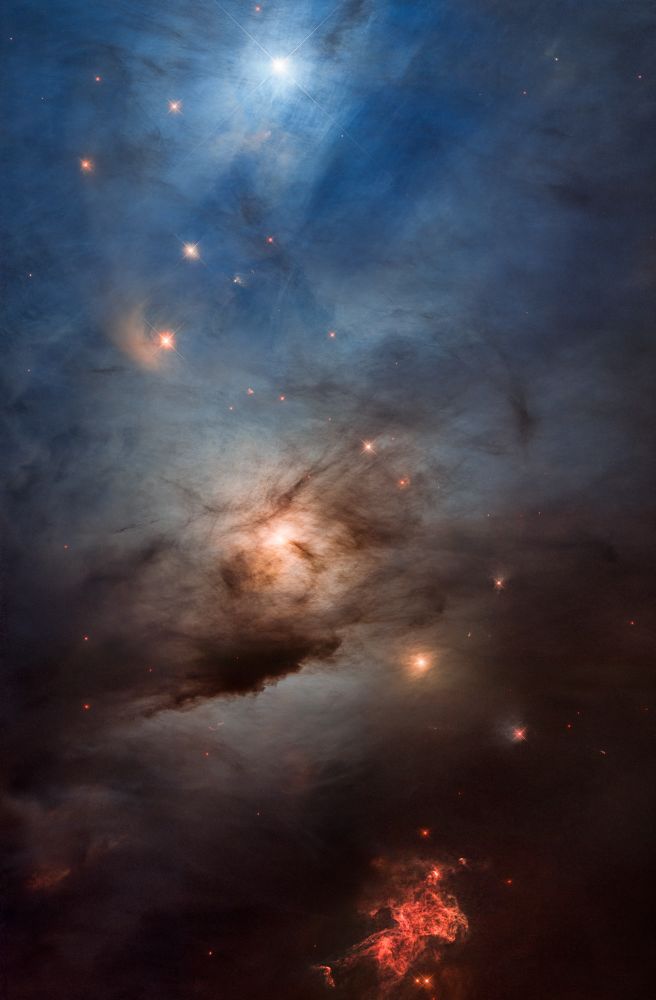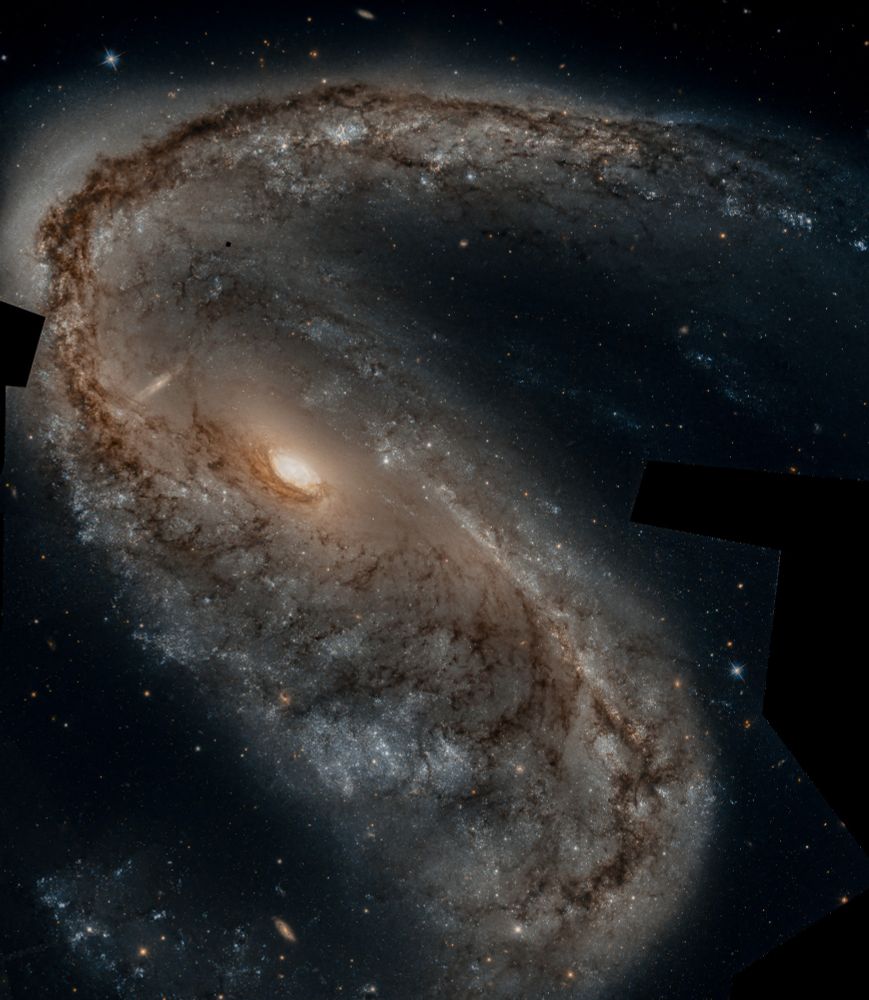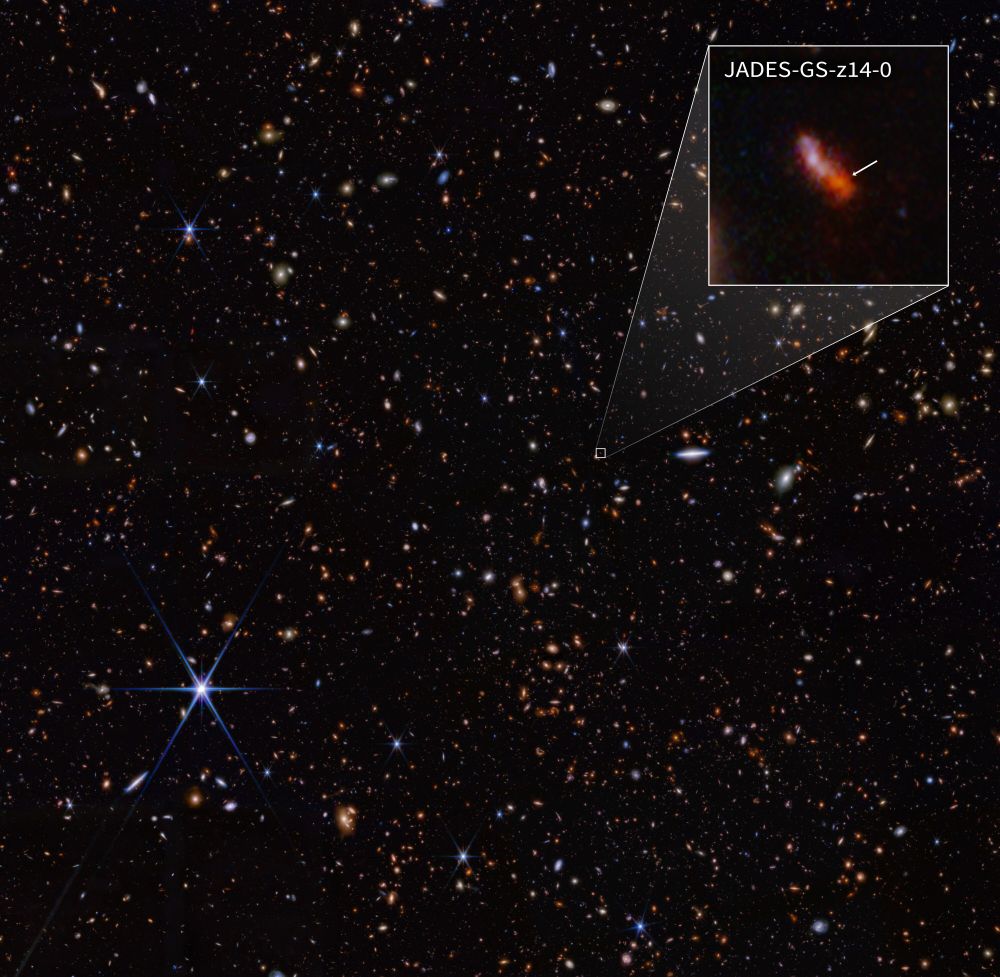
I wrote about Victoria Roshchyna, the Department of Justice, and more in the latest edition of The Press Freedom Report, ft @kirannazish.bsky.social @globalfreemedia.bsky.social @rcfp.org @freedom.press @seth-stern.bsky.social
27.04.2025 15:04 — 👍 3 🔁 4 💬 1 📌 0
Thrilled to be featured in The New York Times! @nytimes.com
Fantastic piece by @jack-tamisiea.bsky.social on our discovery of the role of physical forces in evolution! With insightful comments from @wcratcliff.bsky.social!
15.04.2025 16:55 — 👍 71 🔁 19 💬 5 📌 3

This is an infrared image of the Horsehead Nebula taken by the Hubble Space Telescope. The image shows a dark, horse-head-shaped cloud of dust and gas, known as Barnard 33, rising from a turbulent background of glowing gas and bright stars. The "neck" of the horse faces to the lower left. The image is dominated by hues of red and brown from the dust, with areas of blueish light outlining the edges of the nebula where it is being illuminated by surrounding stars. Numerous stars are scattered throughout the image, appearing as bright white points of light. The overall scene has a dramatic and majestic feel.
IR image of the iconic Horsehead nebula by Hubble.
🔭 🧪
03.02.2025 15:59 — 👍 4049 🔁 323 💬 72 📌 23
Canadian MP Charlie Angus: So here’s how it’s going to go down—this is going to be very rough. But the big wake-up call is for our American friends.
For example, Kentucky—the number one purchaser of Kentucky spirits in the world is Canada, and all our provinces have just pulled it off the shelves.
03.02.2025 17:23 — 👍 30394 🔁 5944 💬 1097 📌 463

Many stars crowd the image, shining in shades of white, blue, and orange, and more closely concentrated at the center.

Bright blue stars are in a cluster at the center of the image. They are surrounded by a shell of brownish and burnt orange dust and gas. The shell has ridges that reach towards the stars like teeth. Stars within the dust and gas are hidden from Hubble but visible to Webb in the infrared. A number of more distant galaxies also appear in the background.

Ferocious stellar winds, likely from the bright blue star at the top of the image, are blowing through a curtain of dust. The fine dust scatters the starlight at blue wavelengths. Farther down, another bright, super-hot star shines through filaments of obscuring dust, looking like the Sun shining through scattered clouds. A diagonal string of fainter accompanying stars looks reddish because dust is filtering starlight, allowing more of the red light to get through. The bottom of the picture presents a keyhole peek deep into the dark nebula. Hubble captures the reddish glow of ionized hydrogen. It looks like a fireworks finale, with several overlapping events.

Fluffy tan-colored nebula clouds, with rust-colored highlights, surround a black central area. Within that area, the focal point of the image is one large yellow star with eight long thin points. To the right of this star is a bright star cluster in an oval shape. The stars within the cluster look like tiny pale blue sparkles. The cluster is more densely packed at its core and scatters outward. Towards the bottom of the image, multiple arms appear to spiral out of a cloudy tan knob. Taken together, the structures resemble a spider or a squid. Other blue and yellow eight-pointed stars, as well as distant galaxies, are dotted throughout the image. Credits: NASA, ESA, CSA, STScI, Webb ERO Production Team
i can’t fix anything that’s going on right now, but i can show you some beauty that’s out there… 🌌✨
28.01.2025 21:19 — 👍 9236 🔁 921 💬 216 📌 44

Dispatch from #Berlin
29.01.2025 07:58 — 👍 0 🔁 0 💬 0 📌 0

A spiral galaxy with two arms: one stretching to the top right of the image, the second to the bottom left. The arms appear orange/red. The centre is really bright. A lot of background galaxies can be spotted everywhere, with one of them appearing like a ghost behind the main galaxy of this image!
Hubble still got our back whenever we feel overwhelmed! 🔭
This is the NGC-2442 galaxy (~50 million light years away), as seen by Hubble in 2021.
To be honest, I think that this is one of my best processed Hubble image to this day 😊
HD: flic.kr/p/2qGugBC
21.01.2025 17:21 — 👍 2568 🔁 208 💬 40 📌 8

To Meta executives, then, these changes represent a kind of market correction — a reversion to the center after the liberal establishment dragged them into begrudgingly creating a safe space for the most fragile members of their user base.
I see it differently — as a case of the company naively trading one impossible-to-satisfy constituency for another, and un-learning a decade of hard-won lessons about keeping people safe in the process. However burned Sheryl Sandberg may feel watching Zuckerberg torch her legacy today, at least she doesn't have to be there when history repeats itself.
I wrote about Zuckerberg renouncing Sheryl Sandberg's effort to make Meta a better place for women and people of color to work www.platformer.news/zuckerberg-b...
17.01.2025 02:19 — 👍 845 🔁 131 💬 39 📌 17
 17.11.2024 02:31 — 👍 0 🔁 0 💬 0 📌 0
17.11.2024 02:31 — 👍 0 🔁 0 💬 0 📌 0

The planet Uranus on a black background. The planet appears blue with a large, white patch taking up the right half. The patch is whitest at the centre, then fades into blue as it expands from right to left. A thin outline of Uranus is also white. Around the planet is a system of nested rings. The outermost ring is the brightest while the innermost ring is the faintest. Unlike Saturn’s horizontal rings, the rings of Uranus are vertical and so they appear to surround the planet in an oval shape. There are 9 blueish white dots scattered around the rings.
High resolution image of a planet 3 billion km away and its rings.
Uranus by JWST.
🔭 🧪
14.11.2024 20:38 — 👍 24114 🔁 1312 💬 256 📌 133

A field of thousands of small galaxies of various shapes and colors on the black background of space. A bright, foreground star with diffraction spikes is at lower left. Near the image center, a tiny white box outlines a region and two diagonal lines lead to a box in the upper right. Within the box is a banana-shaped blob that is blueish-red in one half and distinctly red in the other half. An arrow points to the redder portion and is labeled “JADES GS z 14 – 0”.
Most distant object known to humanity.
Found by JWST, JADES-GS-z14-0 is the most distant galaxy ever discovered. It's located 13.6 billion light years from us, and since it takes time for light to travel, we see it as it was only 290 million years after the Big Bang.
🔭 🧪
13.11.2024 20:09 — 👍 14396 🔁 815 💬 190 📌 80
The US Press Freedom Tracker is a database that tracks and catalogs press freedom violations in the United States.
A project of @freedom.press.
DM or email tips@pressfreedomtracker.us
Subscribe: freedom.press/newsletters/
Sir Harry Evans Investigative Journalism Summit
Hosted by Tina Brown, Reuters and Durham University
Livestream 7 May 2025 | London
sirharrysummit.org
Evolutionary biologist (Multicellularity & social evolution). Prof. at Georgia Tech & Director of the QBioS PhD program.
https://ratclifflab.biosci.gatech.edu/
Email salesman at Platformer.news and podcast co-host at Hard Fork.
Journalist | @womenpressfreedom.bsky.social
📍Pakistan
Email for leads and commissioning: rabiamushtaqwork@gmail.com
Researcher, Press Freedom Advocacy, The Coalition For Women In Journalism, Human Rights
Social justice journalist, author, editor and media trainer. My award-winning book is “Troll Hunting.” I do also laugh & wear lipstick 💄
Writer. Tired Dad. Minivan Driver.
Editor of The Left Hook Substack (https://thelefthook.substack.com); Co-host of Democracy-Ish; Author of a Memoir and a Play; @YouTubeWajahatAli
wajali.com
wajahatmali@protonmail.com
Visual Investigations at The New York Times
Freelance writer, editor, columnist & consultant. Formerly at Scientific American, Washington Post, National Geographic, Slate, Smithsonian & Science. Past president of National Association of Science Writers. Birder.
James Webb - Everything That's Hot 🔥
jwstfeed.com
official Bluesky account (check username👆)
Bugs, feature requests, feedback: support@bsky.app













 17.11.2024 02:31 — 👍 0 🔁 0 💬 0 📌 0
17.11.2024 02:31 — 👍 0 🔁 0 💬 0 📌 0

